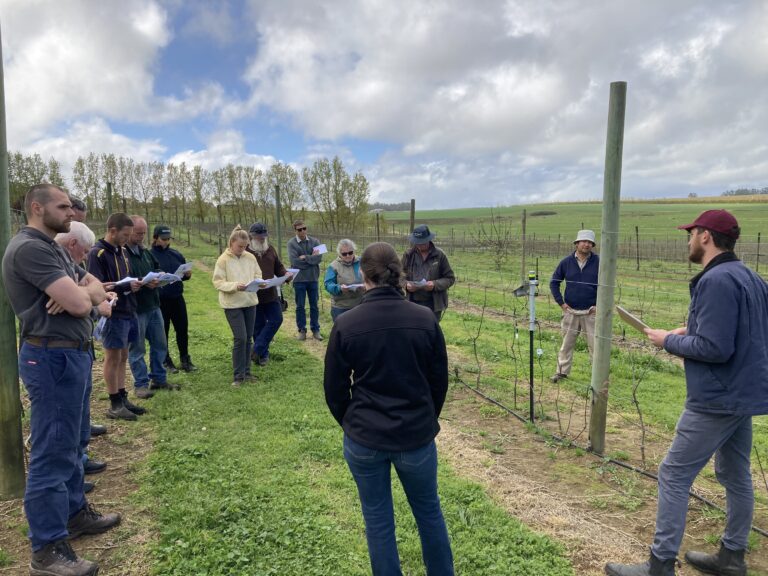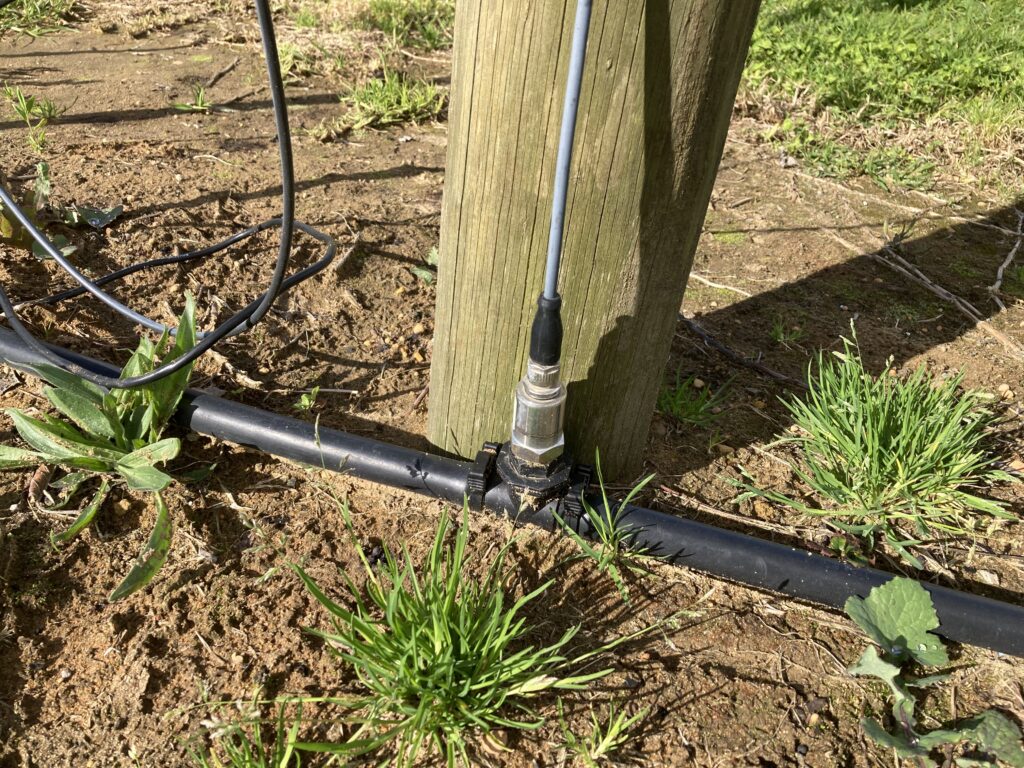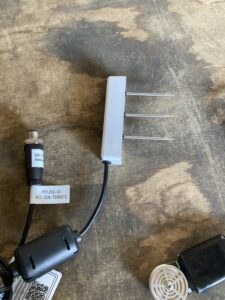
Significant and recent technology advances in equipment used to monitor soil moisture levels and the resulting economic benefits to farmers
through more efficient use of irrigation, particularly in our drying climate, was the topic of discussion during an informative Manjimup field walk last
month.
Research Scientist from the Department of Primary Industries and Regional Development Bill Bateman lead the field discussion, demonstrating
how new automated soil moisture sensing equipment installed at 15 apple, avocado and tomato growing operations had little requirement for regular
paddock checks or maintenance.
Sensors buried in paddocks at three depths and connected to the internet, feed data at regular intervals to the farmer’s phone or laptop.
Bill is helping farmers to evaluate different sensors for different crops as well as interpret the resulting data to fine tune their irrigation systems for reducing water wastage and improving efficiencies and effectiveness.
The field walk was part of a project funded by the Australian Government’s Future Drought Fund and delivered locally by the South West Drought Resilience Adoption and Innovation Hub in partnership with the Department of Primary Industries and Regional Development.
South West NRM’s Peter Clifton is one of eight Drought Hub node leads helping connect farmers throughout the region to the initiative and
attended the field walk.
Drying climate conditions could have a major impact on irrigators’ access to surface and groundwater resources and this project provides support in using irrigated water more efficiently.
“Events like this field walk are so important for supporting growers to become drought resilient through adoption of innovative new practices,” Peter said.
For more information on measuring and interpreting soil moisture levels, read this article about soil moisture terminology.
Farmers wanting more information and support can contact their local Drought Hub node lead, with details listed here.

Pressure transducer installed in the irrigation line to show if the system is operating properly.

Sensors like this one are connected to the internet and then buried. They feed regular data on soil moisture levels to the farmer’s phone or laptop via a cloud based service.



